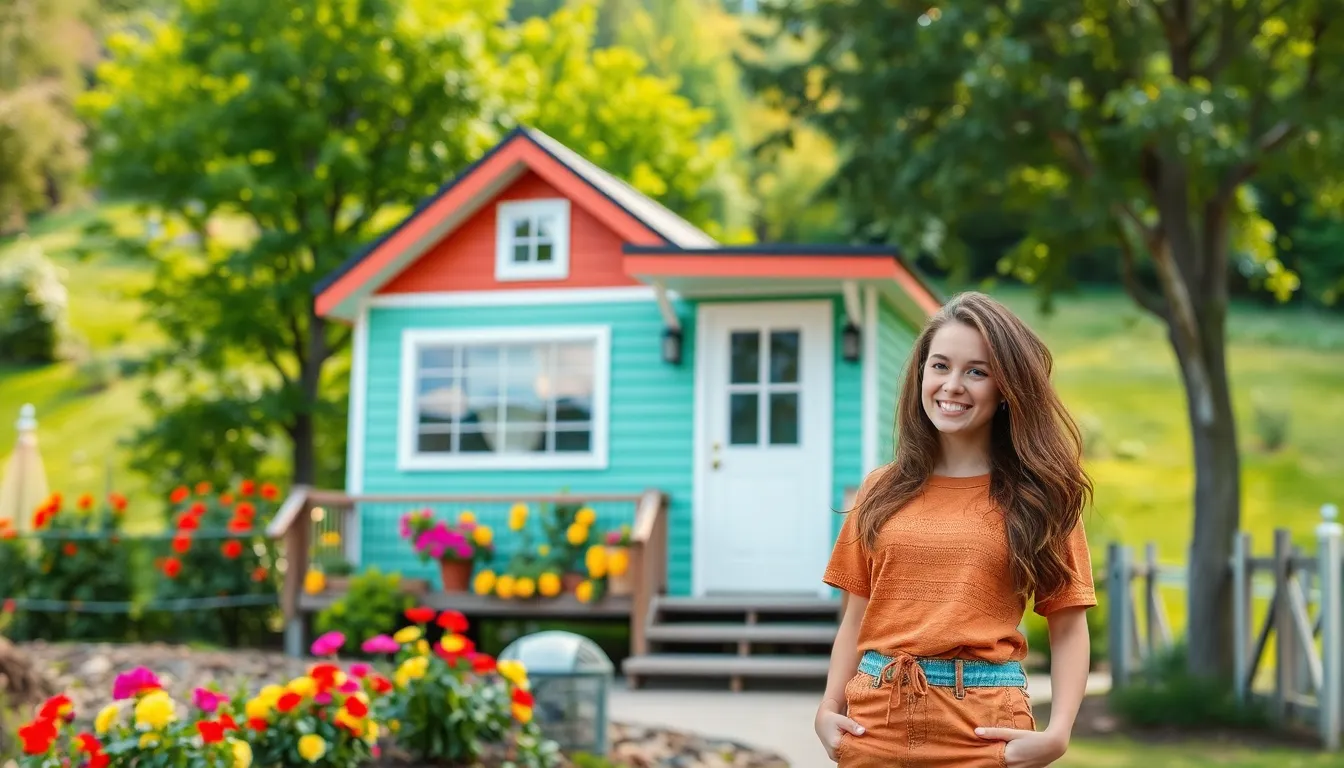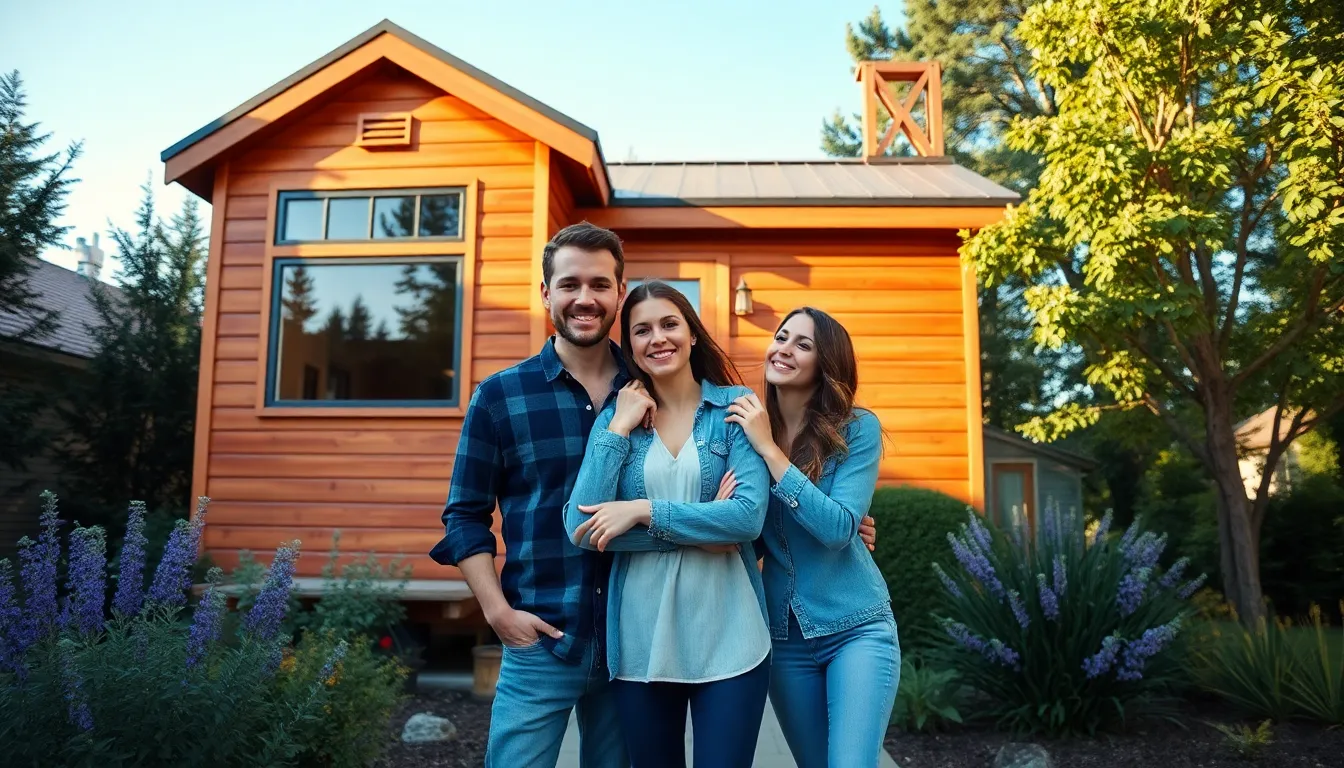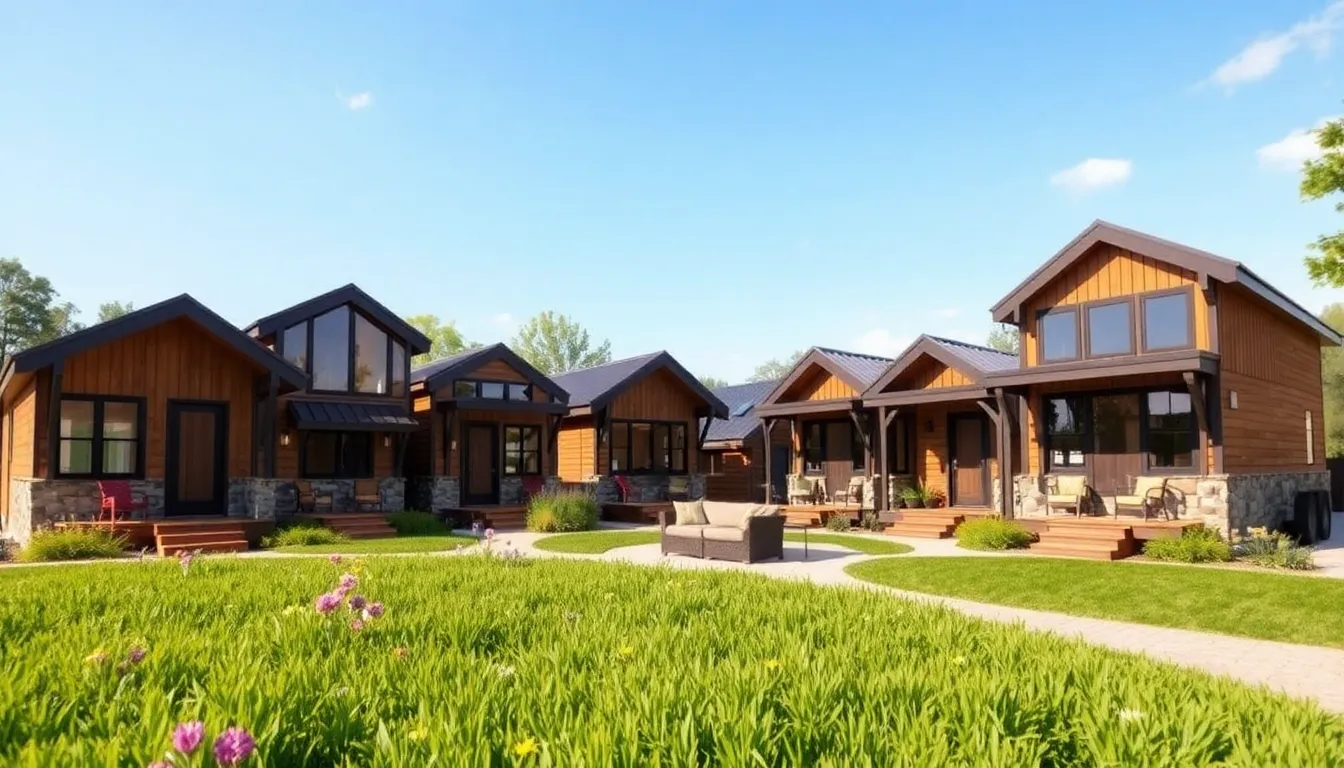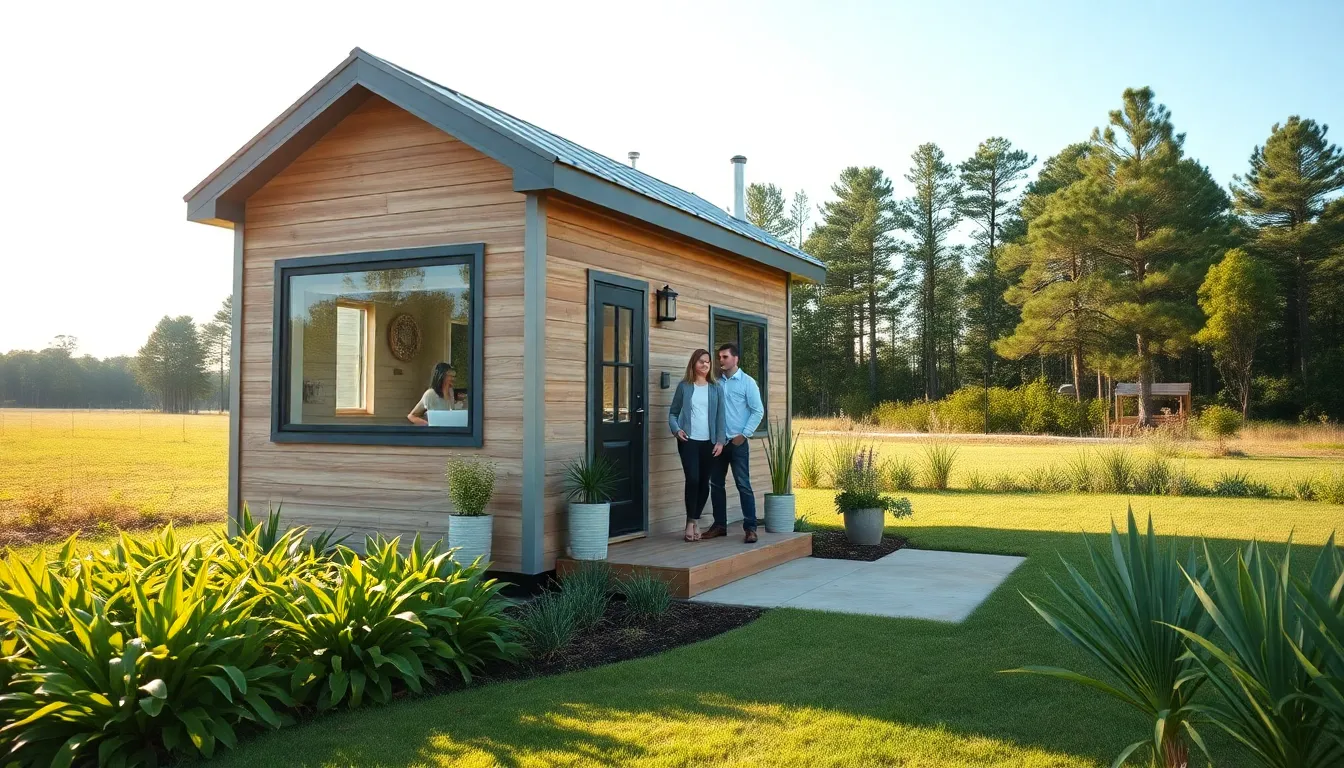In a world where bigger often means better, the tiny house movement is flipping the script and proving that less truly can be more. Imagine living in a space that’s cozier than your favorite blanket fort but packed with all the essentials. This trend is sweeping the nation, offering a delightful blend of simplicity, sustainability, and a sprinkle of whimsy. Who knew downsizing could spark joy and adventure?
Tiny homes aren’t just for minimalists or those with a penchant for fairy tales. They’re a solution for anyone tired of clutter and mortgage payments that feel like a second job. With clever designs and multifunctional spaces, these pint-sized palaces are redefining what it means to live large. So grab your tiny suitcase and get ready to explore why the tiny house movement might just be the key to a happier, more fulfilling life.
Table of Contents
ToggleOverview of the Tiny House Movement
The tiny house movement focuses on embracing minimalist living, encouraging individuals to downsize and simplify their lifestyles. It draws attention to the benefits of smaller homes, including financial freedom and environmental sustainability.
Definition and Origins
The tiny house movement advocates for living in homes typically under 400 square feet. Originating in the early 2000s, this movement gained traction as a response to housing market volatility and consumerism. Notable figures like Jay Shafer played significant roles in popularizing the movement, creating tiny homes that exemplify efficient use of space. As trends evolved, more people recognized that downsizing offers solutions for issues like debt and ecological impact.
Key Principles
Simplicity ranks as a primary principle of the tiny house movement. Minimalist living reduces clutter and fosters intentionality in lifestyle choices. Sustainability is another crucial aspect; smaller homes demand fewer resources and promote a lower carbon footprint. Mobility appeals to many, as tiny houses often come on wheels. Financial freedom also drives the movement, as lower costs lead to reduced mortgage payments and maintenance expenses. Community signifies a final principle, encouraging connections among tiny house advocates, fostering mutual support, and promoting shared resources.
Benefits of Living in a Tiny House
Living in a tiny house offers various advantages, transforming lifestyles and priorities for many individuals. These benefits contribute to a more joyful and fulfilling existence.
Financial Freedom
Financial freedom represents a primary motivator for choosing tiny house living. Lower mortgage payments align with smaller living spaces, allowing individuals to redirect funds towards experiences and savings. Many tiny house owners report reduced utility costs, reflecting a decrease in overall living expenses. Furthermore, the ability to downsize possessions contributes to a simpler financial life. Individuals often experience a liberated financial state, enabling them to pursue passions and travel more freely. Tiny houses encourage a minimalist philosophy, ultimately enhancing one’s financial well-being.
Environmental Impact
Environmental impact serves as another key benefit of tiny house living. Smaller homes require fewer resources to build and maintain, resulting in a reduced carbon footprint. Many tiny homes incorporate sustainable materials and energy-efficient appliances, promoting eco-friendly lifestyles. Reduced space leads to a natural decrease in consumption, encouraging mindful purchasing habits. Individuals living in tiny houses often embrace renewable energy solutions, such as solar panels, further lessening their environmental impact. Ultimately, this approach aligns with a growing commitment to sustainability and responsible living.
Challenges Faced by Tiny House Owners
Tiny house owners encounter several significant challenges. Legal restrictions and spatial limitations often present obstacles to adopting this lifestyle.
Zoning and Legal Issues
Zoning laws frequently hinder the placement of tiny homes. Many municipalities lack clear regulations regarding tiny houses. Owners face difficulties obtaining permits for their homes. Some locations classify tiny homes as recreational vehicles, which restricts permanent residency. Navigating these regulations requires time and effort. Advocates continually push for legal reform to promote tiny home living.
Space Constraints
Space limitations pose a unique challenge for tiny house owners. Designing functional and comfortable layouts demands creativity and innovation. Limited square footage requires careful consideration of furnishings and storage solutions. Many owners invest in multi-functional furniture to maximize efficiency. Additionally, organizing personal belongings can become overwhelming as space decreases. Residents often adapt to minimalist lifestyles, focusing on essentials. Adapting to these conditions fosters resilience and resourcefulness.
Popular Designs and Features
Tiny houses feature innovative designs that emphasize efficiency and creativity. Space-saving solutions play a crucial role in maximizing every square foot.
Innovative Space Solutions
Clever layouts enhance usability in tiny homes. Foldable furniture allows for easy transition between living and sleeping areas, ensuring flexibility. Built-in storage compartments minimize clutter, transforming often neglected areas into functional spaces. Murphy beds provide ample room during the day while offering a comfortable sleeping option at night. Vertical storage solutions use wall space effectively, making items accessible without taking up floor space. Additionally, open floor plans create a sense of spaciousness, contributing to an inviting atmosphere.
Sustainable Materials
Sustainability plays a vital role in tiny house construction. Many builders select reclaimed wood, reducing the demand for new materials and promoting eco-friendly practices. Energy-efficient appliances also support lower energy consumption, minimizing the environmental impact. High-quality insulation enhances thermal performance, ensuring comfort year-round. Natural materials, such as bamboo and cork, offer durability while being renewable resources. Some homes incorporate green roofs, providing insulation benefits and promoting biodiversity. By prioritizing sustainable materials, tiny house enthusiasts embrace an environmentally responsible lifestyle.
The Future of the Tiny House Movement
The tiny house movement shows no signs of slowing down. Its principles of simplicity and sustainability resonate strongly with increasingly eco-conscious individuals.
Trends and Predictions
Tiny homes increasingly attract young professionals and retirees alike. Innovations continue to enhance energy efficiency, including smart home technology that optimizes resource use. Expect a rise in prefabricated tiny homes, which offer affordability and quicker build times. Many anticipate increased adoption of communal living arrangements surrounding tiny houses, emphasizing shared resources and community. As zoning regulations evolve, more municipalities may embrace tiny homes, easing legal restrictions. Predictions indicate that the tiny house market may grow by 20% annually over the next five years, reflecting a sustained demand for downsizing.
Community Growth
Community connections are vital to the tiny house movement’s success. Individuals are forming networks that share resources, experiences, and advice. Local meetups now focus on promoting sustainable living practices and design solutions. Many tiny house villages have emerged, providing residents with supportive networks and access to communal spaces. Partnerships with environmental organizations help educate the public about sustainable housing options. Community workshops teach essential skills for building and maintaining tiny homes, empowering residents. Growth in online forums and social media groups fosters a sense of belonging, linking diverse individuals invested in minimalist living.
Conclusion
The tiny house movement represents a significant shift in how individuals perceive home and lifestyle. By embracing minimalism and sustainability, it offers a pathway to financial freedom and environmental responsibility. As more people seek meaningful connections and experiences over material possessions, tiny homes provide an innovative solution to modern living challenges.
With ongoing advancements in design and community engagement, the movement continues to grow, attracting diverse demographics. The future looks promising for tiny house enthusiasts as they navigate both opportunities and obstacles. Ultimately, the tiny house movement is not just about downsizing; it’s about redefining what it means to live well.








